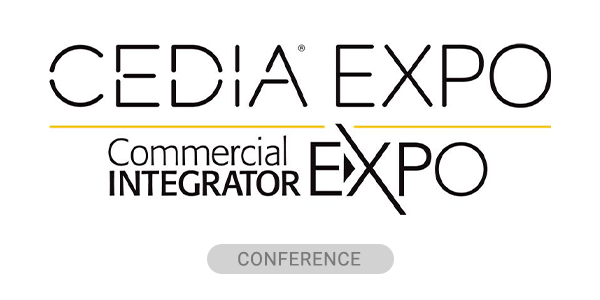Editor’s Note: Our editors published this story about sound masking and its indispensable role in the return to office on Wednesday, Aug. 27. We will note any subsequent updates.
The workplace landscape of 2025 looks dramatically different from what it was just two years ago. A significant shift back to the office is creating new challenges that facility managers and AV integrators must address head-on.
Recently, Jones Lang LaSalle, a global commercial real estate company, released data comparing Q2/23 to Q2/25. In Q2/23, only 5% of the Fortune 100 employees were full-time in the office, with 78% working hybrid schedules. As of last quarter, more than half are back in the office full-time, with only 41% maintaining hybrid arrangements.
This dramatic shift in occupancy is creating an acoustic nightmare in offices that weren’t designed for fluctuating occupancy patterns, making sound masking an essential technology for maintaining productivity and enhancing employee satisfaction.
The Perfect Storm of Acoustic Challenges
Compounding wildly inconsistent occupancy levels from day to day, companies that chose to downsize their office footprints during the pandemic are now cramming the same-sized workforces into smaller spaces.
“We saw over the last few years, as companies were signing up for new office space or their leases were renewing, they were consistently taking less square footage,” explains Chase Rupe, CEO of Lencore, the industry leader in sound masking solutions and paging and audio systems. “But now, as they’re bringing back the same size workforces they had before the pandemic, they’re having to fit them into these much smaller areas.”
Rupe notes that on Tuesdays through Thursdays, when workers who continue to maintain a hybrid schedule tend to converge in the office, spaces become overcrowded and cacophonous. But on Mondays and Fridays, the opposite problem emerges: Offices become so quiet that every cough or pen click becomes a distraction, creating what he describes as a library effect, in which minimal sounds disrupt concentration.
Modern office aesthetics are also working against acoustic comfort. The sleek designs that look stunning are creating echo chambers that amplify every conversation and keyboard click. Many of today’s offices feature extensive hard surfaces like glass, brick, concrete and open ceilings that bounce sound waves endlessly without soft materials to absorb them.
“It really can become an echo chamber and kind of a nightmare for speech privacy and unwanted noise,” Rupe notes. “It’s nearly impossible to achieve speech privacy or acoustical comfort without some sort of active technology like sound masking included in those designs.”
Engineering the Solution: Beyond White Noise
Sound masking is a scientifically engineered approach to acoustic comfort that goes far beyond simple white noise systems. The technology works by generating an unintrusive background sound tuned to target speech frequencies, set just above ambient speech levels. The principle is straightforward: louder sounds mask quieter sounds.
It’s important to note that many companies sell basic white noise systems that often create more problems than they solve, leading to negative experiences that turn people off to sound masking entirely.
“What sets high-quality sound masking apart is a carefully engineered approach,” Rupe states. “At Lencore, we use our trademarked Green Sound® technology, which incorporates white noise for speech privacy but goes far beyond that. It blends 29 distinct sound contours to create a full-spectrum audio mask that is both effective and exceptionally comfortable. The best sound masking systems are those you don’t consciously hear, yet they work seamlessly in the background. Speaker quality is also critical. We recommend speakers at least four inches in diameter, ideally six, to ensure rich, full-range sound. Anything smaller simply can’t deliver the depth needed for optimal performance.”
When facility managers face acoustic challenges, their first instinct is often to consider construction. But permanent solutions like walls and soundproofing materials can’t adapt to the dynamic needs of modern hybrid workplaces. Sound masking offers the most flexible and adaptable solution. Once walls are built, they are expensive and time-consuming to move.
Sound masking systems can be reconfigured as office layouts change and adjusted to meet specific acoustic requirements without major construction projects. The systems can be zoned differently, speakers can be moved, and adjustments can be made through software or hardware placement to address current needs and future requirements that can’t be anticipated.
“To the tune of 30% of the cost of doing wall construction, you can have an entire sound masking system,” notes Rupe. “And while major construction projects can take weeks or months to complete and significantly disrupt daily operations, sound masking systems can typically be installed and operational within days.”
Sound Masking Delivers Measurable Returns Across Industries
The financial case extends well beyond simple installation costs, with documented returns on investment that vary significantly across different industries. Each sector realizes value through distinct mechanisms – from regulatory compliance in healthcare to security requirements in government facilities to productivity gains in corporate environments. Sound masking delivers measurable returns across three key sectors.
Sound Masking in Healthcare Environments
- HIPAA Compliance: These solutions prevent others from overhearing private conversations containing protected health information. Avoiding a single HIPAA violation can pay for an entire sound masking system, given that violations range from $100 to $50,000 or more per incident.
- HCAHPS Scores: Hospital patient satisfaction surveys directly impact Medicare reimbursement. When sound masking helps to boost scores, it can increase reimbursement by tens or hundreds of thousands of dollars annually.
Sound Masking in Government and Contractor Facilities
- Security Protocols: Sound masking helps meet strict regulations like FISMA and other federal security standards by preventing eavesdropping on sensitive conversations. Meeting these requirements protects against severe penalties or loss of government contracts.
Sound Masking in Corporate Offices
- Workforce Productivity: Studies demonstrate that these solutions can reduce distractions and improve focus by about 20% on average. Research from institutions like the University of California confirms that workplace interruptions significantly increase stress and reduce work quality, highlighting the need for acoustic solutions like sound masking. The value proposition of a workforce that’s 20% more productive makes a compelling business case for the technology.
A potential 20% boost in productivity represents enormous value for any organization. In knowledge-based work environments, constant interruptions and background noise create significant productivity drains. Employees lose focus when overhearing phone conversations, meetings in adjacent spaces, or general office chatter.
Research shows it can take up to 23 minutes to fully regain concentration after an interruption. When you consider that the average knowledge worker earns $75,000 annually, a 20% productivity improvement translates to $15,000 in additional value per employee per year. That represents $1.5 million in annual productivity gains for a 100-person office, a figure that far exceeds the cost of a sound masking system.
Speaking from the perspective of an AV integrator working closely with healthcare organizations, Mike Young, executive director of sales at CEC, says, “We’ve seen firsthand how sound masking has emerged as a strategic solution to today’s acoustic challenges. With fluctuating patient census, hybrid workflows, and heightened sensitivity to privacy and comfort, sound masking has helped our clients like UW Health reduce distractions and protect speech privacy. Unlike traditional soundproofing and wall construction, sound masking offers a scalable, adaptable solution that can serve as either a complement to existing infrastructure or, in many cases, a cost-effective alternative. For healthcare organizations committed to both clinical excellence and teaching, sound masking helps create an environment where staff can focus, patients feel secure, and the learning atmosphere remains optimized.”
Dispelling Myths and Moving Forward
“I think the biggest myth is that sound masking is a ‘nice-to-have,’” says Rupe. “But I can tell you, especially based on that ROI conversation that we’ve just had, there are few technologies with a proven ROI as strong as sound masking.”
As organizations navigate hybrid work and fluctuating occupancy levels, acoustic comfort has moved from a peripheral concern to a central business issue. Sound masking addresses these challenges while delivering measurable returns through improved productivity, regulatory compliance and employee satisfaction.
“My advice to AV and technology integrators or end user companies considering sound masking is to engage with experienced providers early in the planning process,” says Rupe. “Look for companies that work consultatively from the earliest project stages and offer free design services with rapid turnaround times. Quality providers should be able to deliver full design and quotes within 24 to 48 hours at no charge, so sound masking should be a considered solution.”
For organizations that take that step, the benefits extend far beyond just acoustic comfort.
“Facilities that include this technology shield themselves from regulatory liability while experiencing greater focus and productivity from their teams,” concludes Rupe. “Ultimately, engineered sound masking delivers happiness for everyone; It has become a business essential, not just a nice-to-have.”
Learn About Lencore Sound Masking Solutions
To explore Lencore’s innovative solutions and how they are transforming the modern workplace, visit Lencore.com. Also, check out Communications Engineering Company (CEC) at CECInfo.com to learn more about their offerings.





